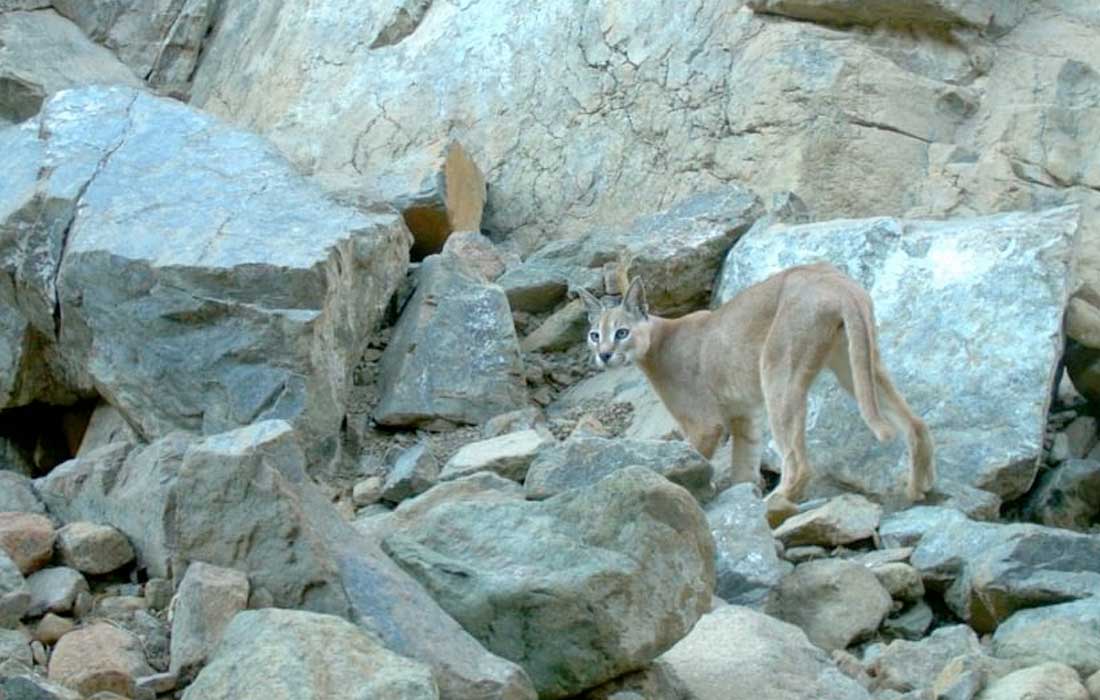Title: Rare Sighting of Arabian Lynx in Wadi Wurayah Marks a Significant Milestone for Biodiversity in the UAE
FUJAIRAH, UAE: A remarkable turn of events has unfolded in Wadi Wurayah National Park with the confirmed sighting of the critically endangered Arabian lynx, offering an optimistic perspective on conservation efforts within the United Arab Emirates. This significant discovery, captured by state-of-the-art motion-sensor cameras, highlights the relevance of innovative technology in the ongoing battle for biodiversity preservation.
The sighting is part of the ‘Notice Nature’ initiative, a pivotal collaboration between the Fujairah Environment Authority, Emirates Nature–WWF, and Mashreq Bank. This project aims to enhance knowledge of local fauna and flora and underscores the critical importance of preserving miraculously fragile ecosystems. The partnership represents a collective response to the urgent need for environmental conservation in the face of rapid urbanisation and climate change pressures.
Classified as Graded Critically Endangered on the UAE’s National Red List, the Arabian lynx (Lynx caracal schmitzi) is a symbol of the region’s wild heritage and biodiversity. This elusive feline had not been confirmed within the park’s confines for several years, raising concerns about its survival in the wild. Prior encounters with this rare species were recorded in 2019 near Jebel Hafeet and again in 2023 in the vicinity of Wadi Shees. This most recent sighting offers renewed hope for the continued survival of the Arabian lynx and serves as a testament to the resilience of the species and the persistence of local conservation efforts.
Dr. Ali Hassan Al Hammoudi of the Fujairah Environment Authority expressed that the reappearance of the lynx aligns with World Habitat Day, a global observance dedicated to raising awareness about the importance of habitats for all living organisms. He noted that the presence of such a remarkable creature in its natural environment is a testament to ongoing restoration and habitat preservation measures being implemented by the authority. The advanced camera network established within the reserve can be credited with facilitating this discovery and capturing images of other rare species, including the Blanford’s fox.
Furthermore, Dr. Andrew Gardner from Emirates Nature–WWF elaborated on the significance of these findings. He articulated that this sighting serves as both a celebration and a pronounced warning regarding the fragility of biodiversity. The Arabian lynx plays a critical role in maintaining the ecological stability of mountain ecosystems, serving as a predator that helps balance prey populations. He emphasized the necessity for continued conservation awareness and action to ensure that habitats remain viable for this species and others like it.
The nocturnal and reclusive nature of the Arabian lynx complicates efforts to understand its behavior and population dynamics fully. Consequently, the photographic evidence gathered not only validates the existence of the species in the region but also provides invaluable data that can inform future conservation strategies. Long-term studies capturing the lynx’s habits, breeding patterns, and interaction with its ecosystem are vital for the development of effective wildlife management plans.
The significance of the Arabian lynx sighting extends beyond the individual species; it encapsulates broader themes of environmental stewardship and community engagement. The Fujairah Environment Authority has fostered local community involvement through initiatives such as the Leaders of Change program, which empowers residents to participate actively in conservation efforts. This communal approach allows for a richer pool of insights and support that strengthen these initiatives’ impact and longevity.
As the UAE stands at a crossroads of development and environmental preservation, this highlight of the Arabian lynx serves as a poignant reminder of what can be achieved through collaborative conservation efforts. The sighting breathes new life into the efforts to protect vulnerable species and underscores the responsibilities shared by individuals, organizations, and governments to safeguard the natural tapestry of the region for future generations.
In sum, the sighting of the Arabian lynx represents far more than an isolated occurrence. It embodies a collective commitment to biodiversity preservation in the UAE and reinforces the belief that through concerted conservation efforts, the delicate balance of nature can be maintained.
Tags: #UAE #EconomyNews #EnvironmentNews #Biodiversity #Conservation

